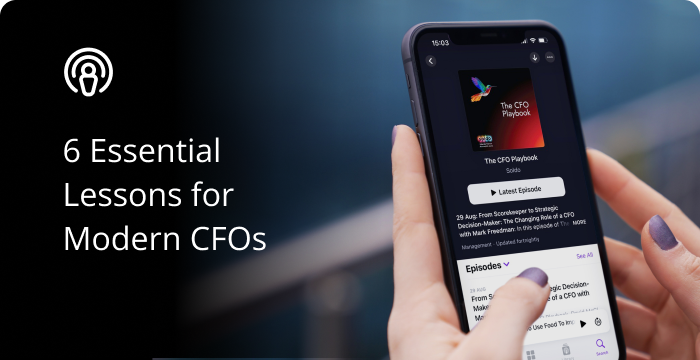Manual methods of business spend management are frustrating and time-consuming. Automating these processes improves the overall employee experience for those who make purchases and those who approve them. It reduces admin, improves the quality of spend data, and gives finance teams better visibility and more control over budgets. This allows organisations to work more efficiently and make better decisions for the future.
What is business spend management?
Business spending includes company costs like employee and travel expenses, marketing or media spend, regular subscriptions, and petty cash. It covers procurement, purchasing, and invoices but excludes costs like standard operational spend or payroll.
With variable spending accounting for 20% of a typical business’s total costs, it’s important to have visibility and control over exactly what’s being spent where, and by who.
The pain of manual processes
Traditionally, business spending has been managed via manual or legacy processes.
This could involve customised spreadsheets, back-and-forth email conversations, and lengthy month-end reconciliations. Paper invoices might be collected and then checked by hand before being stored in a filing cabinet. And when it comes to expenses, company cards might be shared between individuals, or employees may be asked to pay out of pocket for food or fuel before claiming money back.
While these processes may be a familiar way to get the job done, they are not ideal. Sharing company cards or dealing with petty cash means it’s difficult to know who has been spending and on what, and leaves businesses open to expense fraud. While manually dealing with invoices is slow and labour-intensive, and makes it harder to find and correct mistakes.
Without full visibility, finance managers can’t be confident they’re on top of spend at any given time. They just can’t get all the information they need when they need it. This is a problem for any organisation but is a particular concern for start-ups or scale-ups where cash-flow may be tighter or more variable.
Manual processes are more likely to create incomplete or error-ridden data. And when data can’t be relied upon, it’s difficult to make accurate assessments or forecasts for spend. This not only hampers the overall performance of the business, but it also undermines the authority of the finance team. A worry for any CFO.
But finance managers also need to consider employee experience.
Finance teams struggling with unwieldy manual processes can get bogged down with lengthy data entry and reconciliation. While month-end reports might involve sifting through physical invoices or chasing down receipts to balance the books. When the everyday experience in a role is repetitive and unsatisfying, staff may become unhappy or disengaged.
And manual spend management also affects those trying to make purchases. Employees often don’t know who to ask to approve an expense and chasing approvals via email and phone wastes everyone’s time. Delays can mean equipment purchases end up taking days or weeks, leaving new starters or project teams waiting around.
In short, poor processes make the day-to-day painful and frustrating.
How can business spend management be automated?
Automating business spend management doesn’t need to involve building a custom system; readymade solutions are quick and easy to set up and start using. Some solutions automate the entire end-to-end spend management process, while others might focus on one element like procurement or expenses. Simple tools for capturing receipts might suit freelancers, whereas growing or established organisations might benefit from full systems that can integrate with accounting software.
Let’s look at the benefits of automating expense management as an example. Instead of worrying about physical expense forms and delayed reimbursements, staff might use pre-paid or single-use cards to make their own purchases. And, depending on the platform, they may be able to track whether their purchases have been approved, keep on top of their budget, capture VAT information, or take photos of receipts with a mobile app.
Approvers and managers might use an automated platform to manage requests, purchases and reconciliations. They can usually set rules or budgets for individuals, teams, or projects to control exactly what’s being spent. And, because everything’s automated, they can use their dashboard to get an instant snapshot of spend or run real-time reports in a few clicks. Then, when it’s time for reconciliation they don’t need to worry about lengthy manual admin as many spend management systems sync with popular accounting software, so data is automatically transferred.
“I think all finance functions should automate a lot of that basic functionality, because why wouldn’t you?” Paraag Amin, CFO of dotdigital
What are the benefits of automation?
Efficiency
Automation is simpler and faster than manual processes and it frees teams from tedious data entry, paper forms, or number crunching. Using Soldo, for example, cuts 45 minutes from the average expense report. That means no more productivity bottlenecks at the end of the month. And when spending is easy to see, it’s much simpler to identify hidden costs. So, controllers don’t need to worry about overspending, duplicate subscriptions or invoices, or unclaimed VAT.
Accuracy and insight
Removing manual data entry reduces the risk of mistakes, repeated entries, or gaps in the data. So, finance managers can be more confident of the information they are providing the business. The current picture is sharper, and any future predictions are more reliable.
Automation also unlocks fast, data-rich reports that cannot be created when spend is managed via spreadsheets. And everything is done in real-time, so finance managers can access a complete picture of spending and cash-flow at any time, without waiting for statements.
When finance teams are freed from manual processes, they can spend more time on the activities that add value to a business. For example, when they aren’t tied up with creating purchase orders or receipting invoices, they can find opportunities, and identify risks and threats.
This more highly skilled finance team can offer a business better insight, more informed forecasting, and strategic thinking. All of which offers a competitive advantage.
“Technology has become that much more important for the finance person…. people are starting to expect their trusted business advisors or finance leaders to harness all of that power. And if you don’t have the technology at hand, you’re not going to be able to do it.” Darrell Cox, CFO, Vena Solutions
Flexibility and control
Greater control is a key benefit of automation.
Let’s look again at the example of expense management. When managed manually, controllers may not have visibility of expenses until they are made; shared cards made be used for a range of miscellaneous purchases and reimbursements might be requested at the last minute.
With an automated system, controllers can set rules and budgets for different cards or individuals, and they may even be able to limit cards to one type of expense, like travel or office supplies. And cards can be turned on and off instantly, giving complete peace of mind in the event of theft or fraud.
Automation also makes spend management more flexible. While reimbursements can cover an individual’s spending, they make team or project spending tricky. Individual employees are even less likely to want to pay out of pocket in these instances.
With many automated expense management systems, cards, wallets, and budgets can be set up to mirror an organisation’s structure. And they are designed to grow with scaling businesses, or cover multiple currencies where companies operate in more than one country.
Employee experience and potential
Automation boosts productivity but it also has a positive impact on the everyday employee experience. Spending can be delegated to the teams actually making purchases and individuals feel empowered to manage their own spending. That could mean the marketing team feel trusted to have more control over online ad spend, or a project manager could manage their subscriptions.
Everything feels fast and flexible, so the day-to-day experience of work life is better. Equipment sign-off doesn’t take days or weeks, so new starters can hit the ground running. And it’s also easier for managers to show their appreciation by purchasing gifts or organising team get-togethers without the worry of painful admin.
For finance teams, who are no longer focused on unnecessary admin, the workday becomes more enjoyable and more challenging. As they pivot from core accounting functions, they can take on a more central role within the business. This transforms the finance function from isolated accountants to change makers and strategic partners to the wider organisation.
“I think that automation is really key for obviously being efficient and closing your books and all of that good stuff that finance people do. But also to make sure that your finance people on the team are happy are doing work, that they feel is impactful to the company.” Jeannie de Guzman, CFO of 1Password
Not only does this allow CFOs to take on a more influential role within the C-suite, it also shifts their role as a team leader. Time is freed up, so finance leaders can work on developing top talent. This not only ensures that teams are more engaged with their jobs, it makes them more valuable to the business, and more likely to stay. That’s a win all round.
“The way I think about my team and how we build software is we need to move away from data entry. And then unlock our time to actually review information and provide more value and guidance to the business. Then be a pro partner with other departments instead of still having to manually do these tasks.” Long Dinh, VP of Finance at Ada









